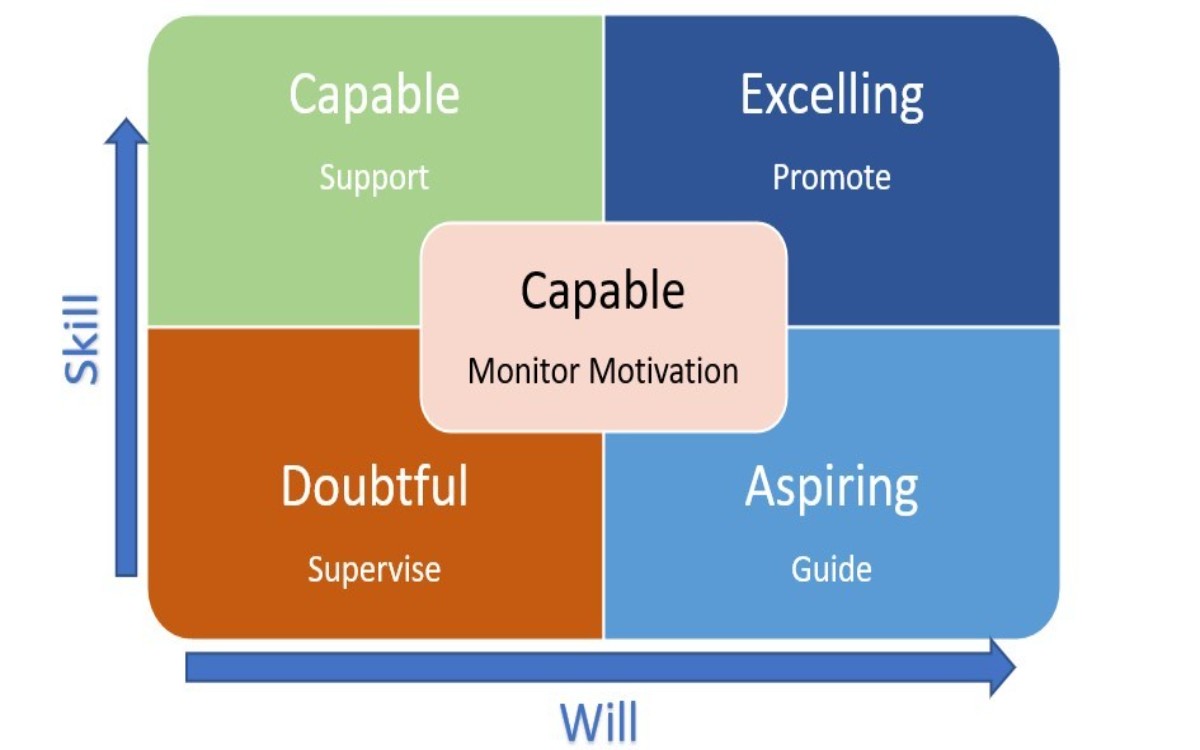In today’s competitive job market, the traditional approach to hiring is evolving rapidly. As organizations strive to attract top talent and ensure a seamless fit within their teams, a paradigm shift towards a skills-based approach has become increasingly prevalent. This shift redefines how organizations assess candidates and reshapes the entire recruitment landscape.
Embracing a skills-based approach allows employers to surpass the limitations of academic credentials, instead focusing on a candidate’s true capabilities and suitability for the role. By considering a diverse array of indicators such as assessments, certifications, and endorsements, companies can expand their talent pools and identify top-quality applicants for even the most challenging positions. This approach streamlines the hiring process and lays the groundwork for nurturing a culture of continuous learning and adaptation post-hiring.
However, navigating this new frontier requires a comprehensive understanding of interviews. Interviews are no longer confined to the HR department; they have become everyone’s business, from hiring managers to team members. Before understanding what an interview is, it is crucial to debunk the myths about the interviews. Let’s move forward to unearth the multifaceted world of interviews, exploring the ins and outs of its constituents.
Debunking Interview Myths

Myths that are believed in tend to become true.
— George Orwell
Over time, the myths we’ve cultivated around interviews have taken on a life of their own, permeating the hiring process framework. These myths, once merely whispers of speculation, have evolved into entrenched practices within the trade.
Years of perpetuation have solidified these misconceptions, leading job seekers and employers alike to unquestioningly adhere to them. However, it’s time to shine a light on these deeply ingrained myths and debunk them once and for all. Let’s peel back the layers of speculation and delve into some of the biggest myths surrounding job interviews.
Myth #1: Overqualification Spells Rejection
Reality: While overqualification may raise eyebrows, relevant experience remains a coveted asset.
Statistics: According to Zety, 65% of employers prioritize candidates with relevant work experience.
Your Interview Strategy: Target roles where your expertise shines. Consider internships to augment relevant experience and distinguish yourself from the competition.
Myth #2: Quick and Easy Interviews
Reality: Brace yourself for a journey; interview processes often entail multiple stages.
Statistics: In 2019, the average US interview process stretched to 27.5 days.
Your Interview Strategy: Set realistic expectations and anticipate a thorough process. Prepare for encounters with various stakeholders and inquire about the timeline for post-interview feedback.
Myth #3: Thank-You Notes Are Outdated
Reality: Gratitude never goes out of style; sending a thank-you note post-interview remains a meaningful gesture.
Statistics: Surveys reveal that 68% of recruiters appreciate receiving thank-you notes.
Your Interview Strategy: Extend your appreciation promptly with a well-crafted email or letter within 24 hours of the interview. Express genuine gratitude and reaffirm your interest in the role.
Myth #4: Practice Questions Suffice
Reality: Preparation beats mere question-answer rehearsals.
Statistics: An overwhelming 88% of hiring decision-makers value candidates who demonstrate comprehensive understanding.
Your Interview Strategy: Embrace holistic preparation by refining non-verbal communication, updating your resume, and conducting thorough company research.
Myth #5: Email Addresses Don’t Matter
Reality: Your digital identity matters; an unprofessional email address can cast a shadow on your application.
Statistics: Three-quarters of recruiters discard resumes bearing unprofessional email addresses.
Your Interview Strategy: Present yourself professionally with a simple, straightforward email address showcasing your name sans distractions or fluff.
Having debunked the myths surrounding job interviews, we have blazed the path to a more informed and effective approach to talent acquisition. So, what exactly is an interview? It’s not merely a formality or a box to be checked in the recruitment process. Let’s unravel the peculiarities of this essential aspect of the hiring process and equip ourselves with the knowledge needed to navigate it with confidence and clarity.
What is an Interview?

An interview is a conversation with a purpose.
— Martin Buber
An interview outranks mere dialogue; it is a strategic exchange with the overarching goal of mutual evaluation and alignment. It serves as a crucial junction where candidates and employers converge to explore compatibility, assess qualifications, and envision shared futures. Beyond the surface-level exchange of questions and answers, an interview is a dynamic interaction that delves into the essence of individuals and organizations alike. It is a platform where aspirations meet realities, where potential converges with opportunity, and where both parties seek to uncover the synergy that propels them toward mutual success.
How Not to Conduct an Interview?

Job interviews serve as crucial touchpoints in the hiring process, offering both candidates and employers the opportunity to assess fit and potential. However, not all interviews are conducted with the same level of effectiveness. Several common pitfalls can detract from the interview experience, ultimately hindering the ability to make informed hiring decisions. To ensure that interviews are conducted in a productive and meaningful manner, it’s essential to be aware of these pitfalls and take proactive steps to avoid them. Here are some key elements of an ineffective job interview:
Underwhelming Impressions
- Rushing to affirm without thorough consideration may result in misrepresentation or false promises about the company.
- A lack of transparent presentation of the company and its opportunities can diminish a candidate’s enthusiasm for the role and may be perceived as insincerity.
Lack of Preparation
- Failure to familiarize oneself with the candidate’s resume and background.
- Neglecting to review the job description and key competencies required for the role.
- Not planning structured interview questions or scenarios.
Poor Communication
- Using vague or ambiguous language that confuses the candidate.
- Interrupting or talking over the candidate, prevents them from fully expressing themselves.
- Failing to actively listen to the candidate’s responses and follow up with relevant questions.
Bias and Discrimination
- Allowing unconscious bias to influence perceptions of candidates based on factors such as race, gender, age, or appearance.
- Asking inappropriate or illegal questions could lead to discrimination claims.
- Making assumptions about a candidate’s abilities or fit based on stereotypes or personal preferences.
Lack of Structure
- Conducting interviews without a clear agenda or timeline leads to disorganization and inefficiency.
- Asking random or irrelevant questions that do not align with the job requirements or competencies.
- Failing to involve multiple interviewers or stakeholders in the process, results in a narrow perspective.
Neglecting Candidate Experience
- Providing minimal information about the role, company culture, or interview process, leaves candidates feeling uninformed and unengaged.
- Failing to follow up with candidates on time or provide feedback after the interview.
- Creating a negative or hostile environment that discourages candidates from expressing themselves freely.
To avoid these common pitfalls, interviewers should prioritize thorough preparation, effective communication, awareness of biases, adherence to structured formats, and a focus on creating a positive candidate experience. By addressing these elements, organizations can ensure that job interviews serve their intended purpose of identifying top talent and making informed hiring decisions.
What is the Role of Competencies in the Hiring Process?

Competency-based interviews represent a pivotal stage in the hiring process, offering candidates a platform to showcase their skills, behaviors, and knowledge in real-life scenarios. Unlike traditional interviews that may focus solely on qualifications and experience, competency-based interviews delve deeper into the core competencies essential for success in the role.
Competencies encompass a wide range of attributes, including communication, problem-solving, leadership, adaptability, and teamwork. During these interviews, employers pose open-ended questions aimed at eliciting specific examples of how candidates have demonstrated these competencies in past experiences. By probing for real-life scenarios, employers gain valuable insights into candidates’ abilities to handle challenges, collaborate effectively, and achieve results.
The role of competency-based interviews in the hiring process is multifaceted. Firstly, they provide employers with a structured framework for assessing candidates’ suitability for the role based on relevant competencies. By focusing on tangible examples and outcomes, employers can make more informed decisions about which candidates possess the requisite skills and behaviors to excel in the position.
Moreover, competency-based interviews offer candidates an opportunity to differentiate themselves by showcasing their strengths in action. By preparing examples that highlight their competencies, candidates can effectively demonstrate their qualifications and suitability for the role.
Decoding Competency: Do We Truly Understand and Measure It?

As we deep dive into the depths of competency-based interviewing, it’s imperative to pause and reflect: do we truly grasp the essence of competency, and are we equipped to effectively measure it? While competency frameworks provide a structured approach to defining and assessing key skills and behaviors, the challenge lies in ensuring a comprehensive understanding and consistent application across the hiring process.
Understanding and measuring competency requires a multifaceted approach that encompasses both qualitative and quantitative methods. One effective strategy is to develop clear and comprehensive competency frameworks tailored to the specific requirements of each role within the organization. These frameworks outline the key skills, behaviors, and knowledge areas essential for success in each position, providing a solid foundation for assessment.
Conducting behavioral interviews and scenario-based assessments can offer valuable insights into candidates’ competencies. By posing situational questions and asking candidates to describe how they would approach various challenges, employers can gauge their problem-solving abilities, communication skills, and decision-making processes in real-world contexts.
Utilizing competency-based assessments and simulations can provide a more objective measure of candidates’ competencies. These assessments may include role-playing exercises, case studies, or practical tasks designed to evaluate candidates’ proficiency in specific areas.
Collaborating with subject matter experts and conducting peer reviews can also enhance the accuracy and validity of competency assessment. By leveraging the collective expertise within the organization, employers can ensure that competency evaluations are aligned with industry standards and organizational goals.
Behavioral Competencies in the Hiring Process

Competency and behavioral indicators encompass a structured approach to hiring, utilizing a competency framework that includes behavioral types, indicators, and tailored questions to assess these competencies. Some of how these components can be categorized into:
Personality Attributes
It comprises thoughts, characteristics, behaviors, attitudes, ideas, and habits, which are fundamental in determining the cultural fitment of an employee. They define how individuals perceive and interact with their surroundings, influencing their approach to tasks, collaboration with colleagues, and overall contribution to the organizational ethos.
Analytical Ability
It is another critical attribute that empowers individuals to navigate complex challenges and make informed decisions. This aptitude involves the ability to discern patterns, identify trends, and draw meaningful conclusions from disparate information. Whether through methodological approaches or creative problem-solving, analytical thinkers can unravel intricacies and devise effective solutions to multifaceted problems.
Interpersonal Skills
It is the glue that fosters effective communication, collaboration, and teamwork within an organization. These skills enable individuals to interact with clarity of purpose, fostering positive relationships with colleagues, clients, and stakeholders. Strong interpersonal skills empower employees to navigate conflicts, build consensus, and drive collective success.
Leadership Skills
The indispensable attribute beyond traditional leadership roles encompasses the ability to inspire, influence, and guide others toward shared goals. A competent leader keeps their team organized, takes calculated risks, motivates peers, and encourages them to unleash their full potential. Effective leadership fosters innovation, resilience, and a culture of continuous improvement within the organization.
These attributes help organizations make more informed hiring decisions by providing insights into candidates’ capabilities, potential, and fit. The hiring process can be strengthened by identifying the communication styles of candidates. Let’s understand the communication styles and their role in the hiring process.
Communication Styles and their Role in the Hiring Process

Communication styles play a pivotal role in the hiring process, offering valuable insights into candidates’ personalities, behaviors, and potential fit within an organization. By understanding and recognizing different communication styles—such as Driver, Amiable, Expressive, and Interrogative—employers can tailor their approach to interviewing, assessment, and decision-making, ultimately leading to more informed hiring decisions and stronger, more cohesive teams.
The Driver communication style is characterized by assertiveness, directness, and a focus on results. Candidates with this style may excel in leadership roles, demonstrating decisiveness, initiative, and a drive to achieve goals. In the hiring process, interviewers can assess Driver-style candidates’ ability to take charge, make decisions under pressure, and drive projects forward effectively.
The Amiable communication style is marked by warmth, empathy, and a focus on building relationships. Candidates with this style may thrive in collaborative environments, demonstrating strong interpersonal skills, empathy, and a knack for fostering teamwork. During interviews, employers can evaluate Amiable-style candidates’ ability to connect with others, resolve conflicts, and cultivate a positive team dynamic.
The Expressive communication style is characterized by enthusiasm, creativity, and a propensity for storytelling. Candidates with this style may excel in roles that require innovation, communication, and the ability to inspire others. In interviews, employers can gauge Expressive-style candidates’ capacity to articulate ideas, engage audiences, and bring energy to their interactions.
The Interrogative communication style is distinguished by analytical thinking, attention to detail, and a systematic approach to problem-solving. Candidates with this style may thrive in roles that require critical thinking, research, and data analysis. During interviews, employers can assess Interrogative-style candidates’ ability to ask insightful questions, analyze information, and make evidence-based decisions.
While Behavioral Competencies focus on assessing candidates’ abilities, behaviors, and fit within the organization, the sourcing frameworks aid in effective talent evaluation and decision-making. Let’s have a look at one such sourcing framework.
The Skill-Will Matrix

Represented as a 2×2 matrix, this framework delineates “will” – encompassing attributes like enthusiasm, self-drive, and willingness – along the vertical axis, while “skill” – denoting core capabilities – is positioned along the horizontal axis. As explained by the World of Work, “It is a simple tool to assess an individual’s performance. It also guides how best to manage them. Individuals with high skill and will be delegated to. Those with high skill but low will should be excited, those with low skill but high will should be guided and those with low skill and low will should be directed.”
When it comes to evaluating the right candidate for the position, these frameworks empower organizations to make informed decisions at every stage of the talent management lifecycle, from recruitment to career development. As organizations continue to evolve in the dynamic world of work, embracing these strategies will undoubtedly pave the way for building high-performing teams and driving sustainable success.
https://zety.com/blog/hr-statistics
https://www.cnbc.com/2017/12/19/hiring-managers-to-job-seekers-no-thank-you-note-no-job.html
https://mettl.com/behavioral-competencies/
https://www.totaljobs.com/advice/how-to-handle-competency-based-interview-questions
https://miro.medium.com/v2/resize:fit:787/1*rSccNYTC8RAObWEcftKgvQ.jpeg
https://www.thehrdigest.com/wp-content/uploads/2022/07/behavioral-competency.jpg
Written By: Dr. Jimmy Jain
Edited By: Afreen Fatima
Society of Design Thinking Professionals









